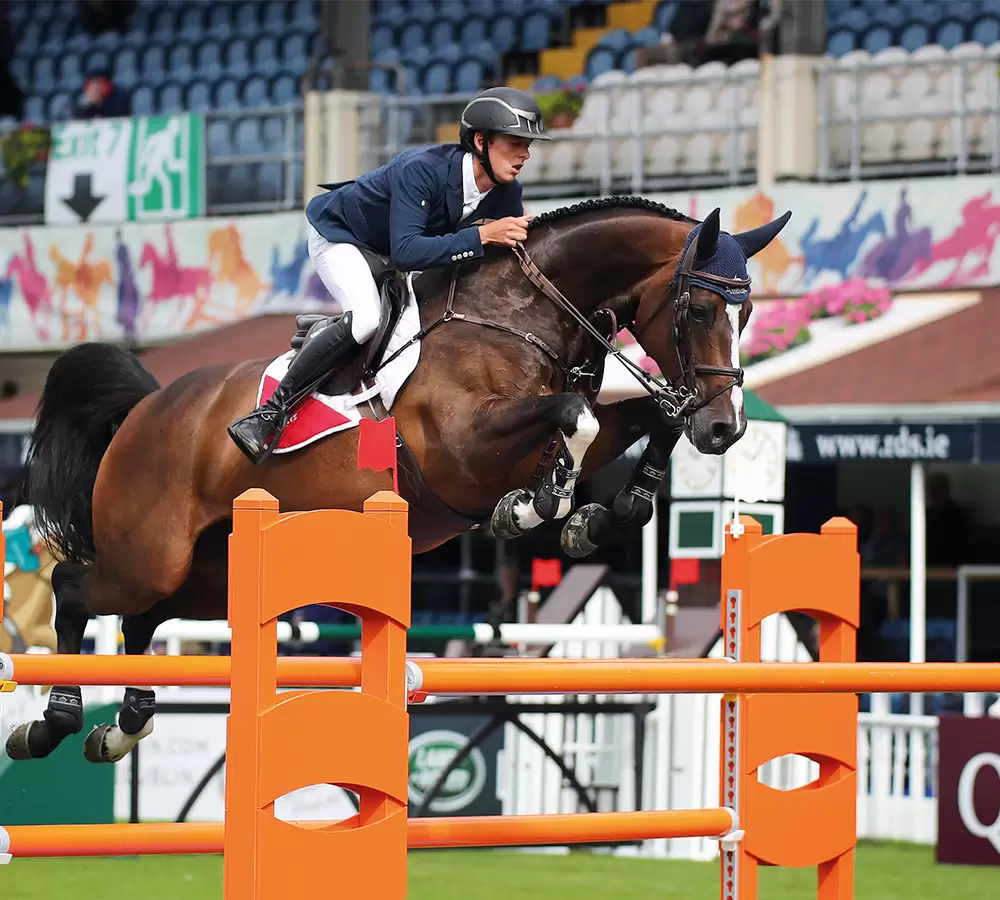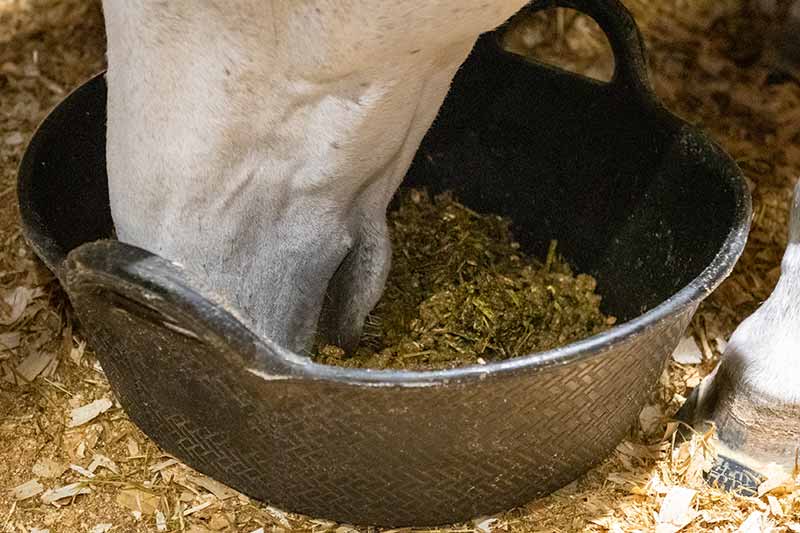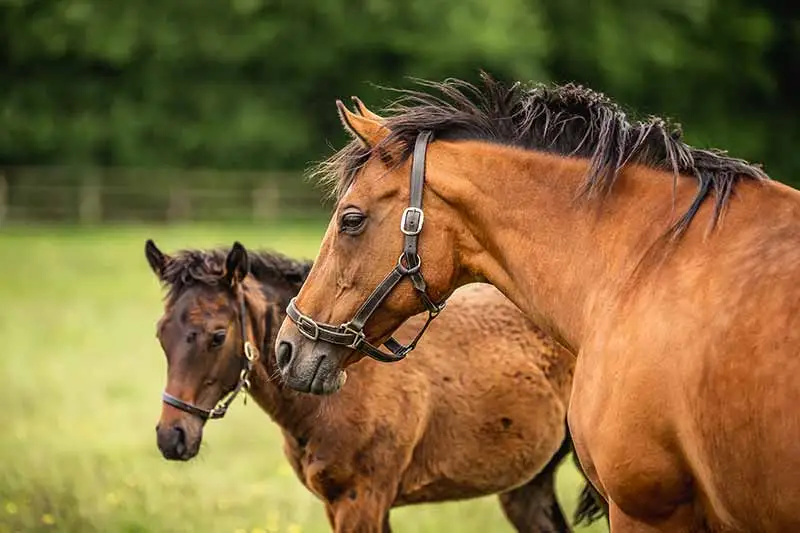
Your horse’s respiratory system – how it works and how to support it
A horse’s respiratory system is highly specialised for athletic function, capable of supplying vast amounts of oxygen to their body when it is needed most. However, it is also vulnerable and even a small compromise to function can have a big impact. Maintaining optimal respiratory function is therefore vital for peak athletic performance.
How does my horse’s respiratory system work?
Your horse’s respiratory system is made up of airways and the lungs. When your horse breathes in, air travels down the trachea (windpipe), then into two tubes called bronchi, followed by smaller tubes called bronchioles which eventually turn into sacs known as alveoli. The alveoli are where oxygen passes into the bloodstream, and carbon dioxide from the bloodstream into the airways. It can help to think of this system like an upside down tree, with the trachea making up the trunk, the bronchi two big branches, with lots of small branches (bronchioles) and leaves (alveoli).
The main purpose of the respiratory system is to provide oxygen to the body and remove carbon dioxide, which is a waste product of cellular activity.
Why is maintaining my horse’s respiratory function important?
While the human respiratory system is specialised for speech, a horse’s is designed to maximise athletic performance. When exercising, a horse is capable of increasing their air volume intake 10 fold, and they have an impressive maximum oxygen intake compared to humans during intense exercise; 180ml/kg/min compared to 80ml/kg/min.1
Despite this, it is still the respiratory system which is likely to be the performance-limiting factor for horses, with the majority becoming hypoxic (low oxygen levels) during exercise. This is why even mild compromises to respiratory function can have a big impact on performance.
Normal respiratory system anatomy and physiology which limits function in horses:
Obligate nasal breathers – horses can only breathe through their nose, so can’t benefit from oral breathing during strenuous exercise
Breathing is linked with stride at canter and gallop – this means they can’t increase their respiratory rate without shortening their stride
What can compromise my horse’s respiratory function?
There are some common respiratory conditions which can impact your horse’s respiratory system:
– Physical abnormalities in the upper airway
– Recurrent airway obstruction (RAO)
– Exercise induced pulmonary haemorrhage (EIPH)
– Respiratory infections
Physical abnormalities in the upper airway
The most common are laryngeal paralysis (roarer) and dorsal displacement of the soft palate. Both cause physical narrowing of the airway. There are surgical options for these conditions if they are impacting your horse’s health or performance.
Recurrent airway obstruction (RAO)
Also known as equine asthma, heaves or chronic obstructive pulmonary disease (COPD), this is a common cause of reduced respiratory function in horses. It is caused by an allergic reaction in the Commented [SS1]: Autoscroll list horse’s lungs to irritant particles found in the environment, such as dust, fungal spores or pollens. This allergic response results in increased mucus production and a reduction in the diameter of the airways. The most common sign is coughing. Equine asthma is not transmitted between horses and affected horses will show abnormal respiratory signs, even at rest.
In younger horses it is known as inflammatory airway disease (IAD) and is often associated with poor performance, exercise intolerance and an intermittent cough – these horses are usually normal at rest.
As both of these conditions are linked to environmental allergens, steps should be taken to improve ventilation and reduce exposure to dust and fungal spores. Airvent Syrup & Gel contains peppermint and eucalyptus to help open the airways for easier breathing and can be particularly useful in these horses before exercise.
Read more about RAO.
Exercise induced pulmonary haemorrhage (EIPH)
EIPH, or “bleeding”, is bleeding that occurs in the lungs during exercise. In the majority of cases, EIPH is not apparent unless an endoscopic examination of the airways is performed following exercise, although some horses will have blood in the nostrils, which is known as epistaxis. It is associated with poor athletic performance, stopping during exercise, frequent swallowing and coughing in the immediate post-exercise recovery period, nose bleeds and even sudden death. The exact cause of EIPH is still unknown, but it has been found to affect up to 95% of racehorses.2
EIPH is likely to be progressive and rest is important for these horses to allow the lung tissue to heal. Zosfor is especially formulated for the high-performance equine athlete. It is designed to support respiratory and blood vessel health, with the natural super-antioxidant bioflavonoid hesperidin, Vitamin C to support healing and Vitamin K, an essential factor for blood clotting.
Read more about EIPH.
Respiratory infections
Respiratory viruses such as equine influenza or equine herpes virus can spread quickly through a yard of horses. Horses may cough, have a clear nasal discharge, elevated temperature and become inappetent. Both of these viruses are preventable with vaccination and your vet will be able to advise about this. Rest is important for these horses to allow full recovery and healing of the lung tissue
Bacterial infections can also affect your horse’s respiratory system. Strangles is probably the most common and is highly infectious. Others include bacterial pneumonias, which can be life-threatening, and Rhodococcus equi, which affects youngstock.
Parasites such as lungworm and Parascaris equorum can also be a risk to your horse’s respiratory health. Speak to your vet about the best worming protocol for your horse.
Honey C is a palatable syrup combining the natural soothing effect of honey and Vitamin C, to help maintain immune and respiratory function, plus thyme, liquorice, and horehound – all herbs that are renowned for their respiratory system supportive properties. It can help to support respiratory health, particularly during times of stress or illness.
Read more about respiratory infections.
For more information about supporting your horse’s respiratory health get in touch with the Foran Equine Team.
References:
1. Mazan M. Equine exercise physiology-challenges to the respiratory system. Anim Front. 2022 Jun 14;12(3):15-24. doi: 10.1093/af/vfac035. PMID: 35711503; PMCID: PMC9197307.
2. McGilvray TA, Cardwell JM. Training related risk factors for exercise induced pulmonary haemorrhage in British National Hunt racehorses. Equine Vet J. 2022 Mar;54(2):283-289. doi: 10.1111/evj.13448. Epub 2021 May 9. PMID: 33843093.
















